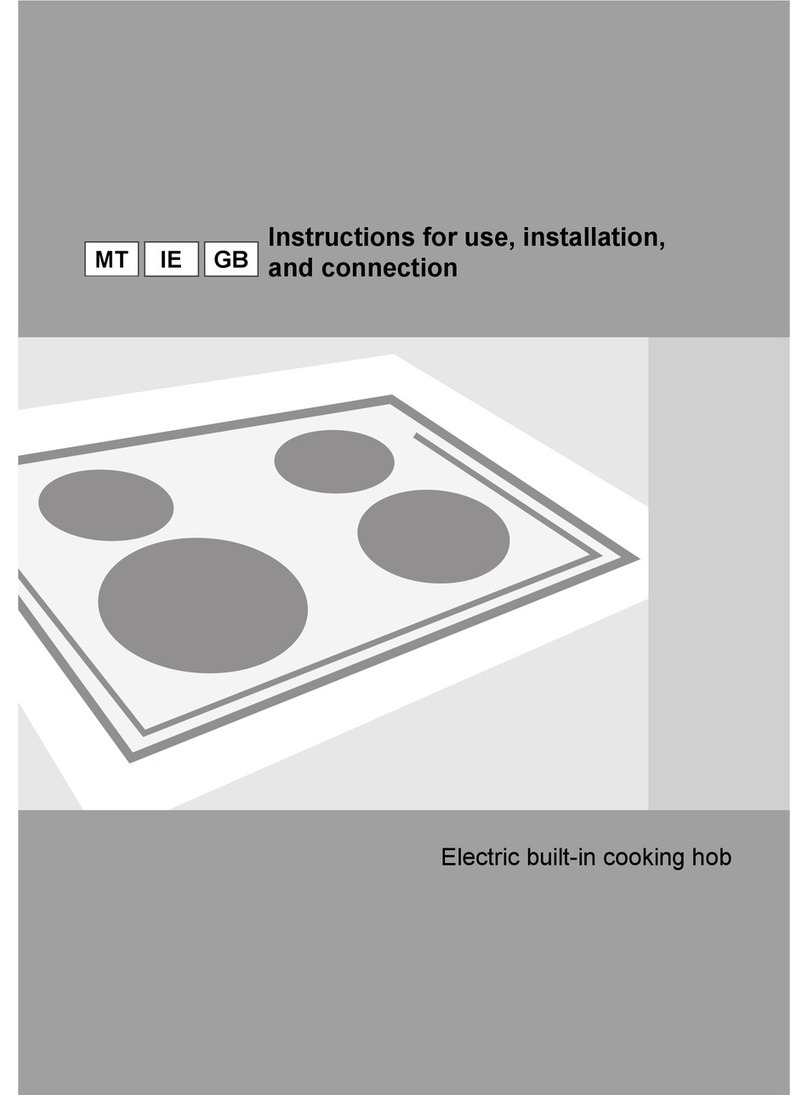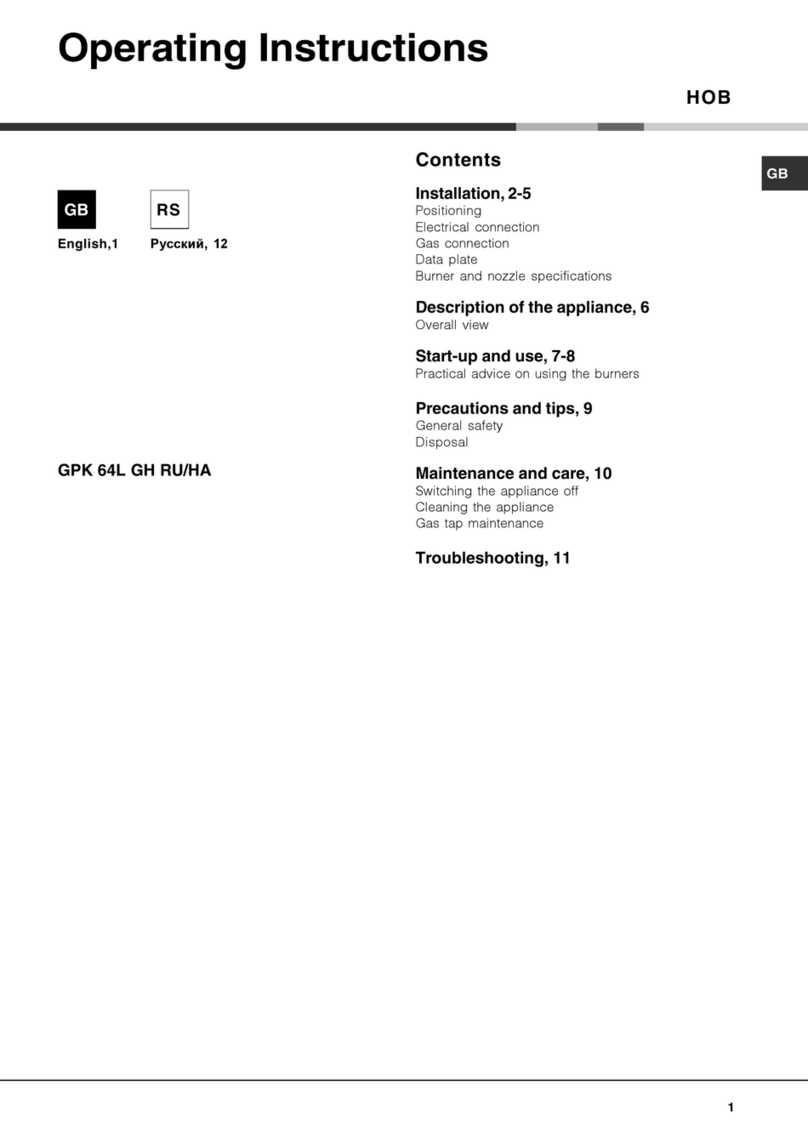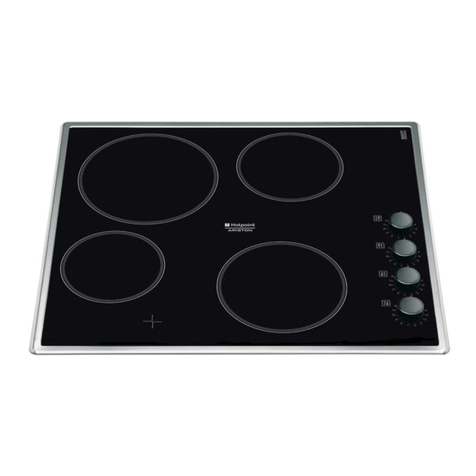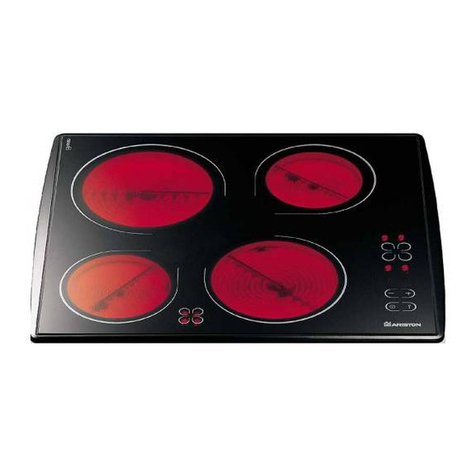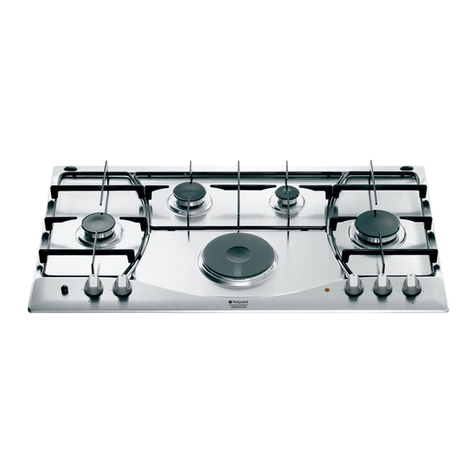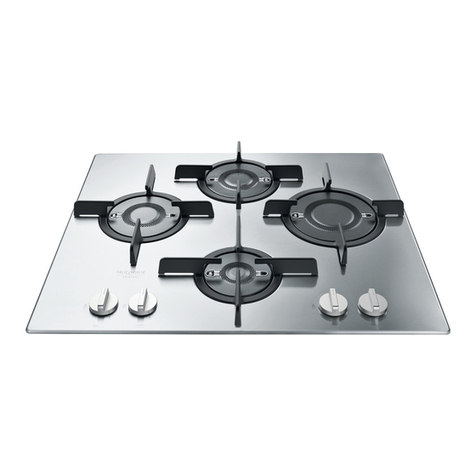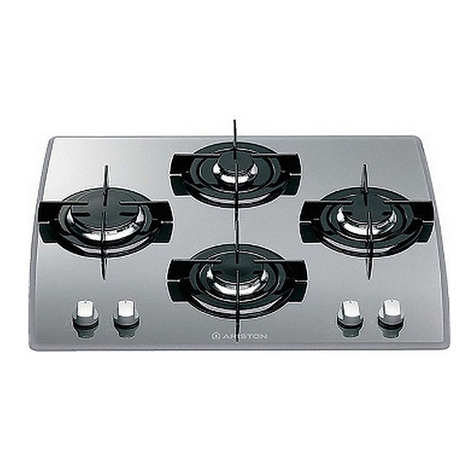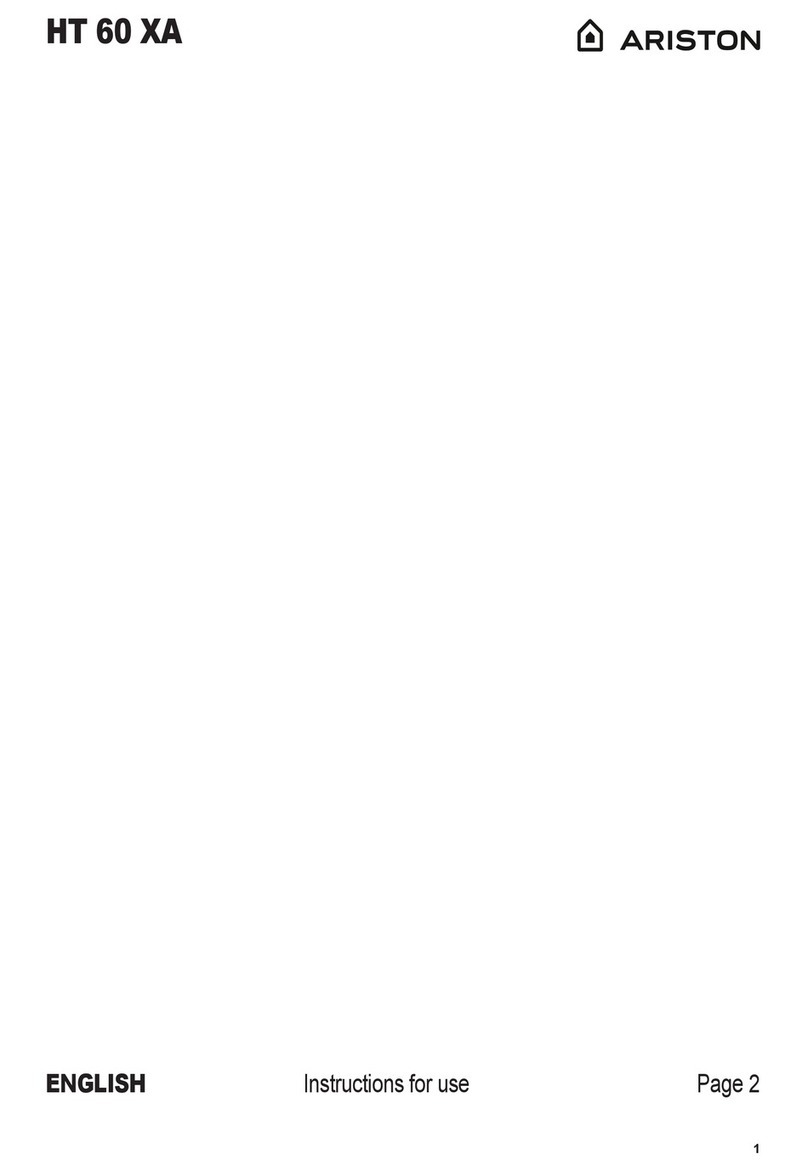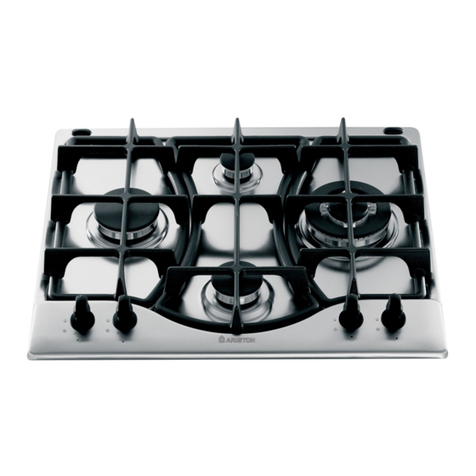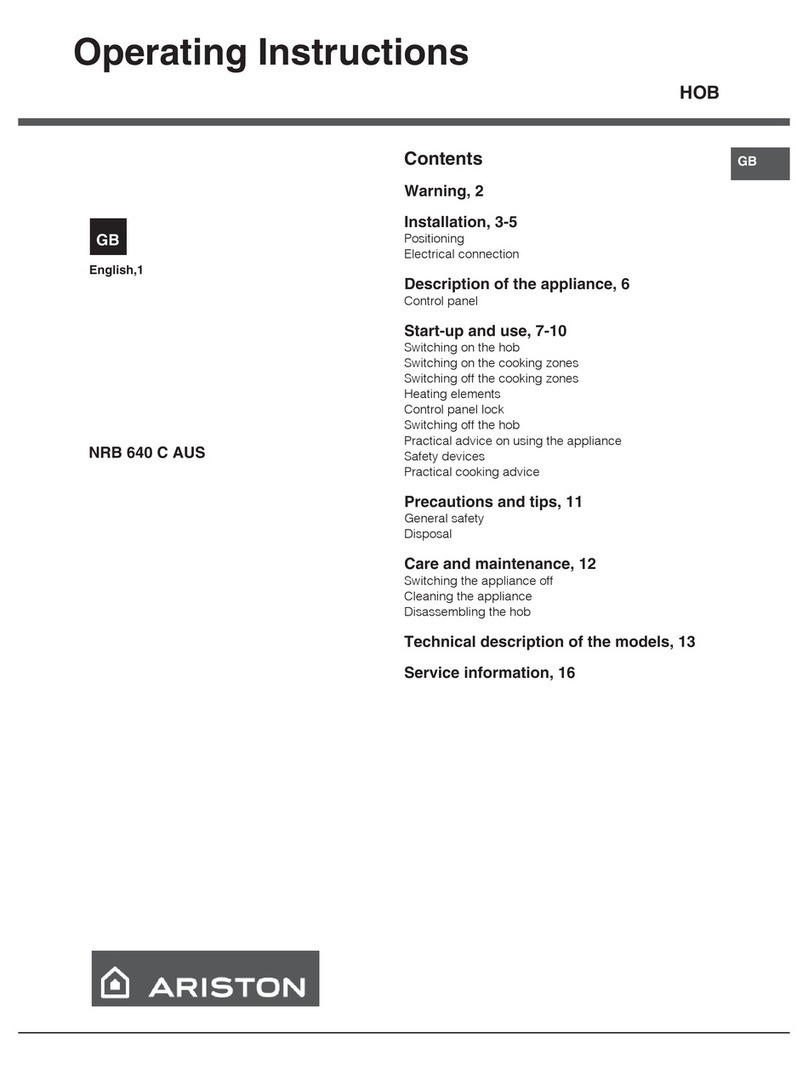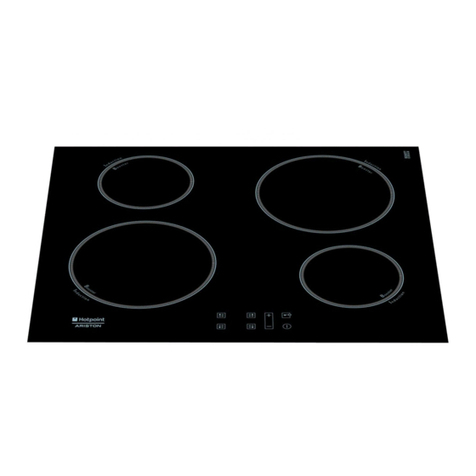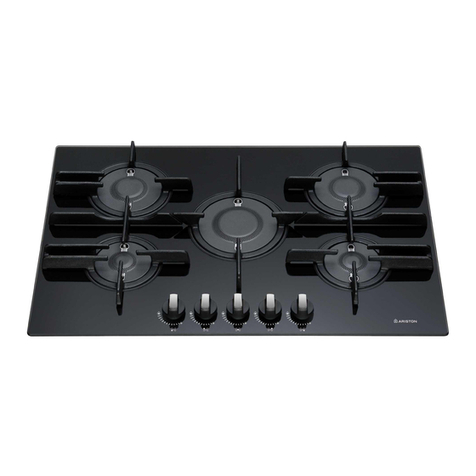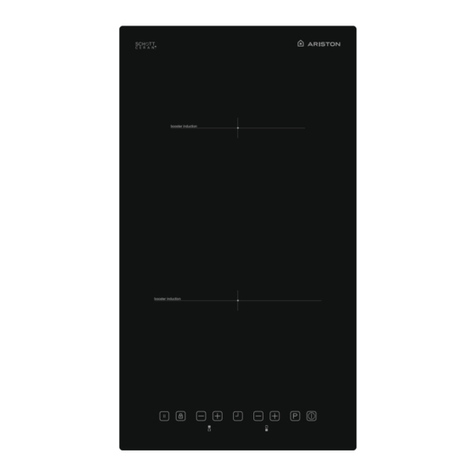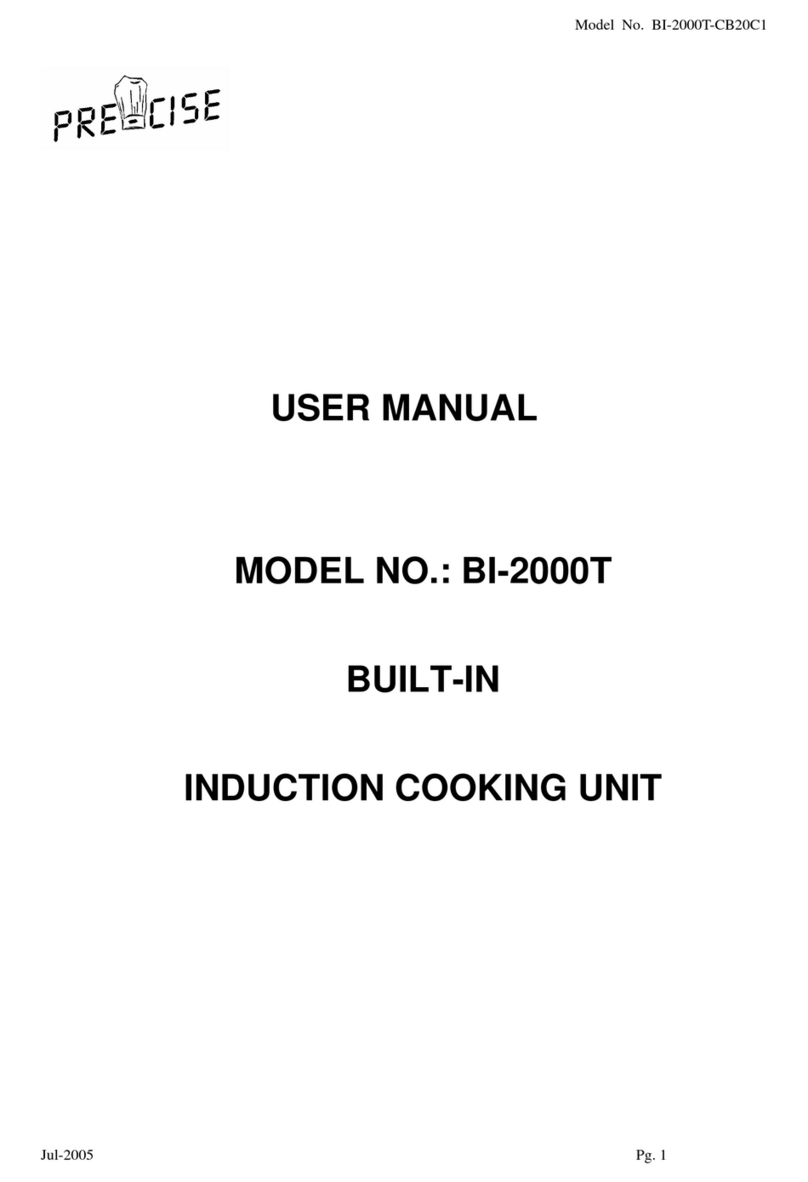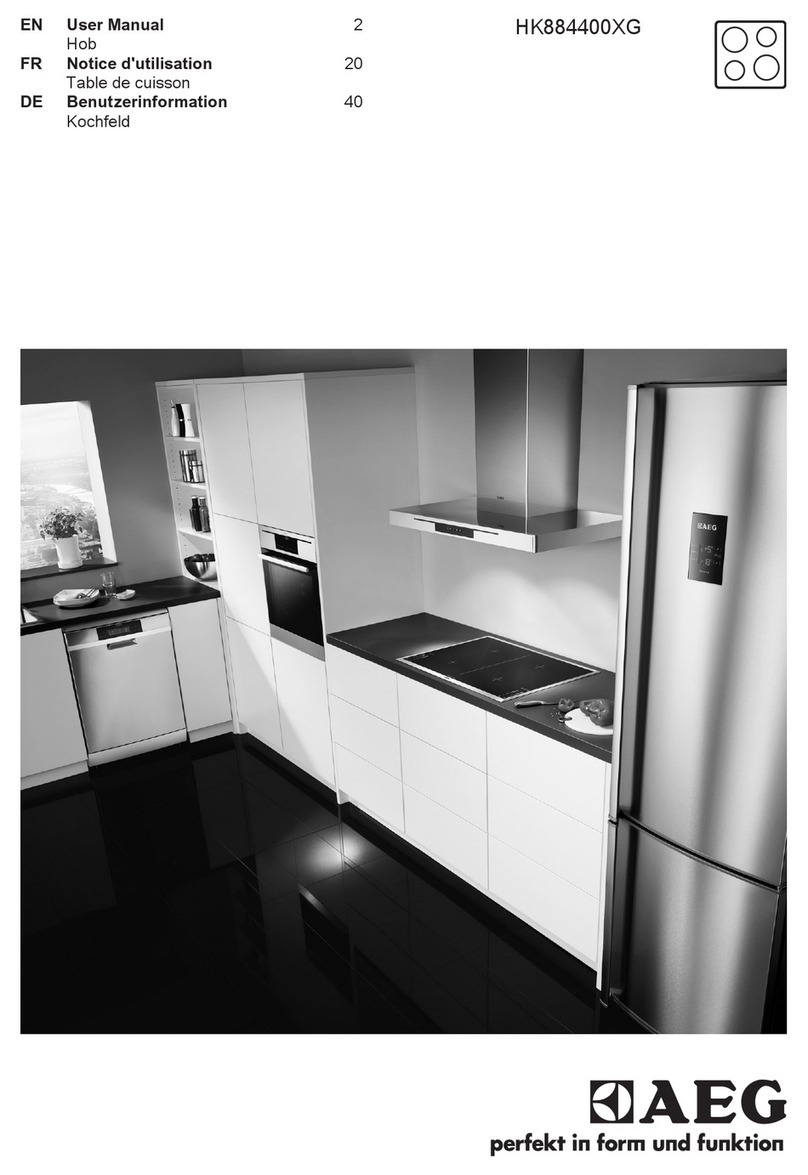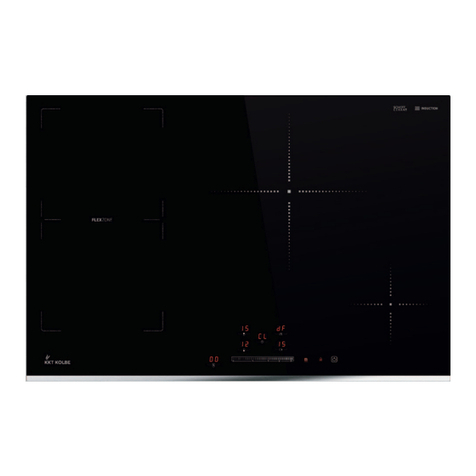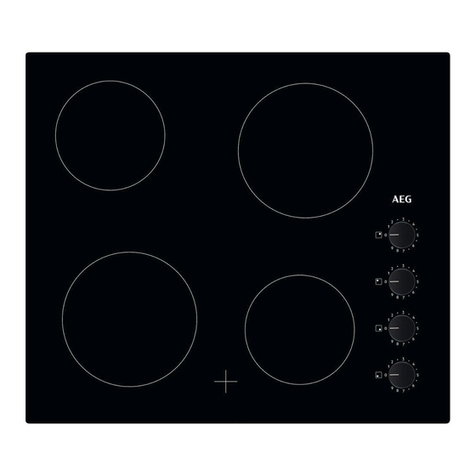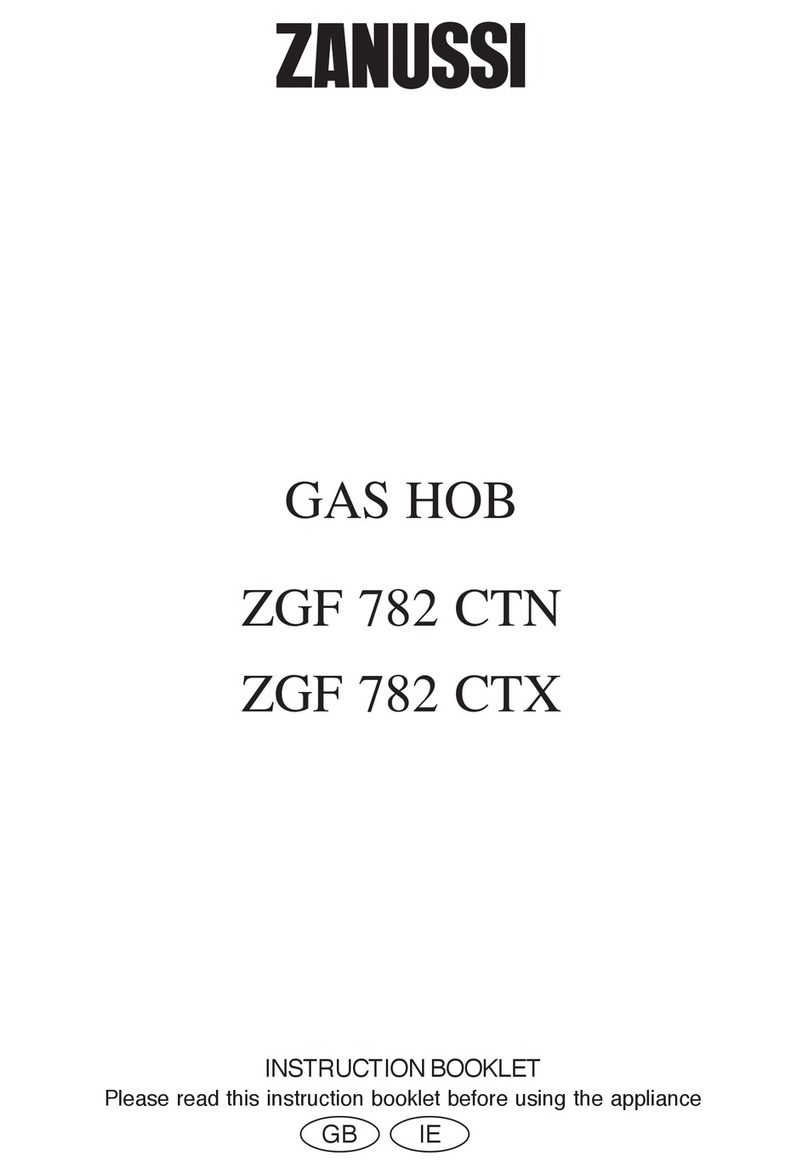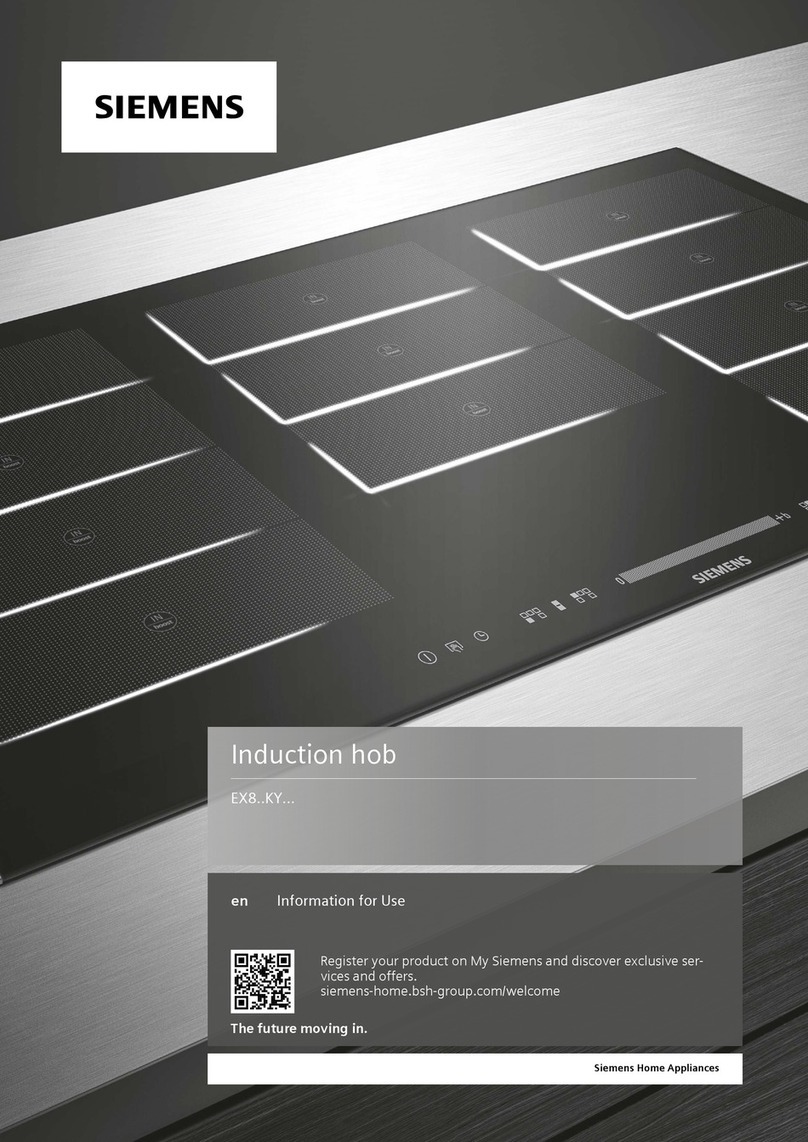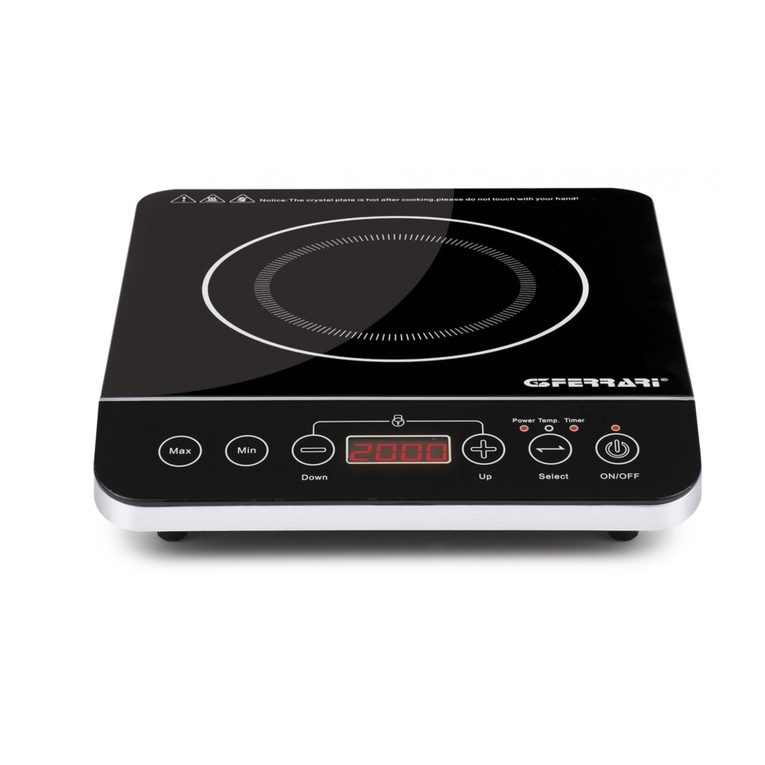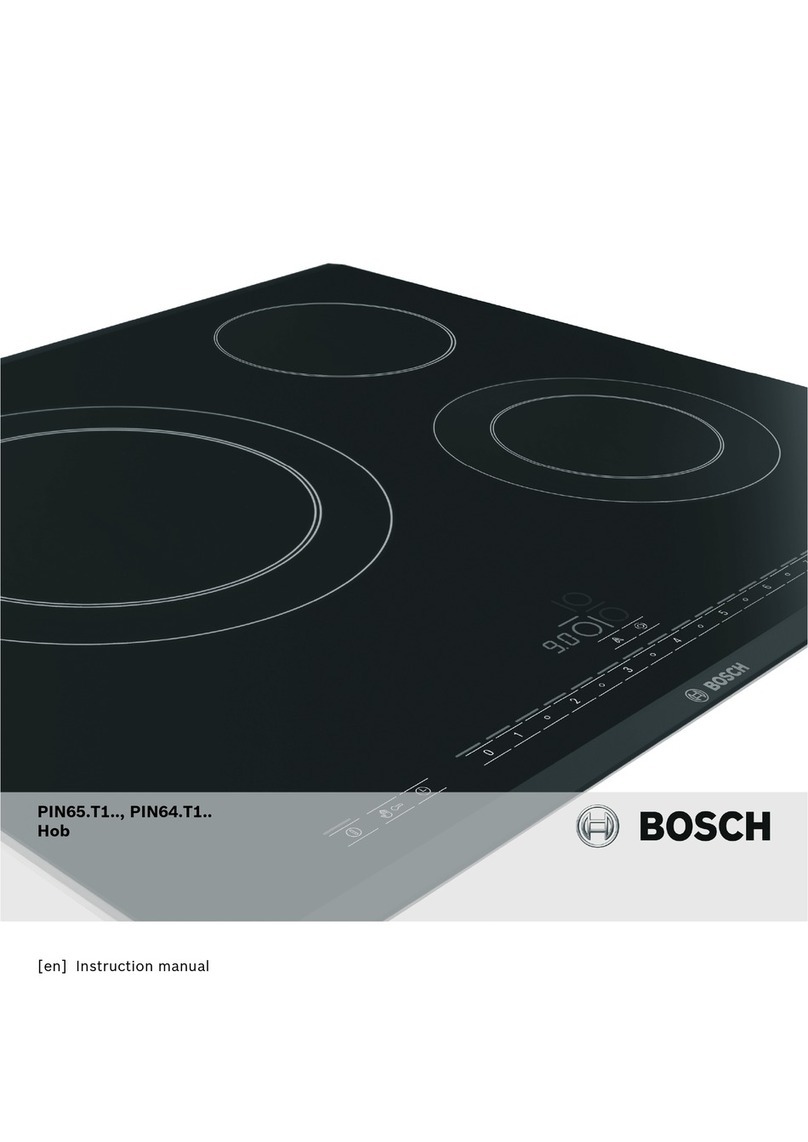9
Start-up and use
!The position of the corresponding gas burner is shown on every knob.
Gas burners
Each burner can be adjusted to one of the following settings using the
corresponding control knob:
● Off
Maximum
Minimum
To light one of the burners, hold a lit match or lighter near the burner and, at
the same time, press down and turn the corresponding knob anti-clockwise
to the maximum setting.
Since the burner is tted with a safety device, the knob should be pressed
for approximately 2-3 seconds to allow the automatic device keeping the
ame alight to heat up.
When using models with an ignition button, light the desired burner pressing
down the corresponding knob as far as possible and turning it anticlockwise
towards the maximum setting.
! If a ame is accidentally extinguished, turn off the control knob and wait for
at least 1 minute before trying to relight it.
To switch off the burner, turn the knob in a clockwise direction until it stops
(when reaches the “●” position).
Practical advice on using the burners
To ensure the burners operate efciently:
• Use appropriate cookware for each burner (see table) so that the ames
do not extend beyond the bottom of the cookware.
• Always use cookware with a at base and a cover.
• Whenthecontentsofthepanreachboilingpoint,turntheknobtominimum.
Rapid (R)
Semi Rapid (S)
Auxiliary (A)
Fish Burner (FB)
Triple Crown (TC)
24 - 26
16 - 20
10 - 14
16 - 20
24 - 26
Ø Cookware Diameter (cm)
Burner
Toidentifythetypeofburner,refertothedesignsinthesectionentitled,“Burner
and Nozzle Specications”.
Precautions and tips
!This appliance has been designed and manufactured in compliance with
international safetystandards. Thefollowing warningsare provided forsafety
reasons and must be read carefully.
General safety
• This is a class 3 built-in appliance.
• Gasappliancesrequire regularair exchangetomaintain efcient
operation. When installing the hob, follow the instructions provided
in the paragraph on “Positioning” the appliance.
• These instructions are only valid for the countries whose symbols
appear in the manual and on the serial number plate.
• The appliance was designed for domestic use inside the home and is not
intended for commercial or industrial use.
• The appliance must not be installed outdoors, even in covered areas. It is
extremely dangerous to leave the appliance exposed to rain and storms.
• Do not touch the appliance with bare feet or with wet or damp hands and
feet.
• The appliancemust beused byadultsonly forthe preparationoffood,
inaccordance withthe instructionsoutlined inthis booklet.Anyother
use ofthe appliance(e.g. forheating theroom) constitutesimproper
use and is dangerous. The manufacturer may not be held liable for
any damage resulting from improper, incorrect and unreasonable
use of the appliance.
• The openings used for ventilation and dispersion of heat must never be
covered.
• Always make sure the knobs are in the “●”/“○”positionwhentheappliance
is not in use.
• Whenunpluggingtheappliancealwayspulltheplugfromthemainssocket,
do not pull on the cable.
• Nevercarryoutanycleaningormaintenanceworkwithouthavingdetached
the plug from the mains.
• Incaseofmalfunction,undernocircumstancesshouldyouattempttorepair
theapplianceyourself.Repairscarriedoutbyinexperiencedpersonsmay
cause injury or further malfunctioning of the appliance. Contact a Service
Centre (seeAssistance).
• Always make sure that pan handles are turned towards the centre of the
hob in order to avoid accidental burns.
• Do not close the glass cover (if present) when the gas burners or electric
hotplates are still hot.
• Do not leave the electric hotplate switched on without a pan placed on it.
• Do not use unstable or deformed pans.
• The appliance should not be operated by people (including children)
with reduced physical, sensory or mental capacities, by inexperienced
individuals or by anyone who is not familiar with the product. These
individuals should, at the very least, be supervised by someone who
assumes responsibility for their safety or receive preliminary instructions
relating to the operation of the appliance.
• Do not let children play with the appliance.
• The applianceis notintended to beoperated by meansof an external
timer or separate remote-control system.
Disposal
• When disposing of packaging material: observe local legislation so that
the packaging may be reused.
• The European Directive 2012/19/EC on Waste Electrical and
Electronic Equipment (WEEE), requires that old household electrical
appliances must not be disposed of in the normal unsorted municipal
waste stream. Old appliances must be collected separately in order
to optimise the recovery and recycling of the materials they contain
and reduce the impact on human health and the environment.
Thecrossed out“wheeledbin”symbolontheproductreminds you ofyour
obligation, that when you dispose of the appliance it must be separately
collected.
Consumers should contact their local authority or retailer for information
concerning the correct disposal of their old appliance.
Respecting and conserving the environment
• Cook your food in closed pots or pans with well-tting lids and use as little
water as possible. Cooking with the lid off will greatly increase energy
consumption.
• Use purely at pots and pans.
• If you are cooking something that takes a long time, it’s worth using a
pressure cooker, which is twice as fast and saves a third of the energy.


